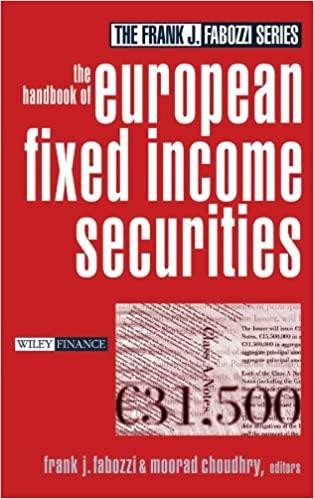Question
BACKGROUND An institutional investor is interested in purchasing a multi-tenant office building in Portland, OR which has an asking price of $183 per SF. Assume
BACKGROUND
An institutional investor is interested in purchasing a multi-tenant office building in Portland, OR which has an asking price of $183 per SF. Assume that, apart from 2% purchasing cost, there are no additional acquisition-related costs. The building size is 60,390 SF. It is currently leased to three tenants:
The first tenant occupies 24,156 SF and currently pays $25/SF/year. The lease will expire at the end of year 2. Based on conversations with the tenant, you can assume that the lease renewal probability is 40%.
The second tenant occupies 10,266 SF and currently pays $23.5/SF/year. The lease will expire at the end of year 4 and has annual rent increases of 4%. Based on conversations with the tenant, you can assume that the lease renewal probability is 0%.
The third tenant occupies the remaining space, and their current rent is $21.5/SF/year. The lease will expire at the end of year 6. Rental increases of $2 per SF will occur in at the beginning of year 2 and year 4.
Note: Assume the current contract rents as basis for your year 1 potential gross income.
V&C for the first two years are assumed to be 0%. After the first lease expires, assume a V&C of 5% of the PGI each year, which will increase to 10% once the second lease expires. The average market rent for office is currently $19/SF/year, and it is forecasted to decrease by 3% each year for two years and then increase again at 4.5% each year for the subsequent 4 years. Renewing tenants receive a $1/SF discount to market rental rate.
The landlord covers $3/SF of operating expenses, which increase by 4% each year (expense inflation). The roof has to be replaced in year 3. The estimated cost is $300,000, and a reserve of $150,000 is created in year 1 and 2. For simplicity, no other capital expenses are assumed, and no tenant improvements and leasing commissions incur for new or renewing tenants.
Assume that the building is bought in January 2023 and sold in December 2027, i.e., the investor expects to hold the building for 5 years. The building is depreciated over 39 years (mid-month convention for first and last year) and the value of improvements (building) is considered to be 80% of the purchasing price. The new roof is depreciated over 39 years (mid-month convention).
The going out cap rate is 7.5% and the investor requires a return of 11%. Selling costs are 2% of the sales price.
Assume an income tax of 35% and a capital gains tax of 15%. Makes sure you tax the depreciation recapture and capital gain with the appropriate tax rates.
Part 1:
Assuming that the investor wants to hold the property for 5 years, create the pro-formas for cash flows from operations and equity reversion until the NOI and net selling price level respectively.
Conduct a discounted cash flow analysis (DCF) to calculate the IRR and NPV based on NOI and net selling price for this investment. Is this investment worth undertaking? Why/why not?
Step by Step Solution
There are 3 Steps involved in it
Step: 1

Get Instant Access to Expert-Tailored Solutions
See step-by-step solutions with expert insights and AI powered tools for academic success
Step: 2

Step: 3

Ace Your Homework with AI
Get the answers you need in no time with our AI-driven, step-by-step assistance
Get Started


